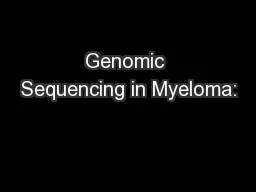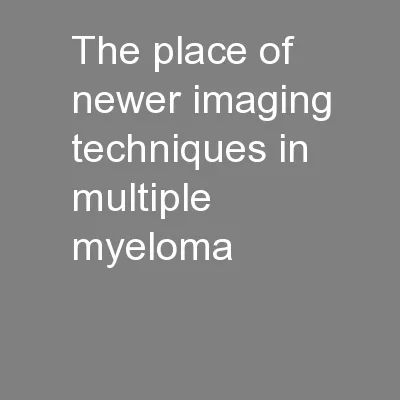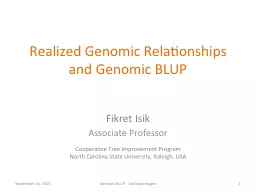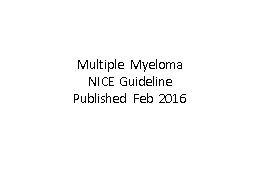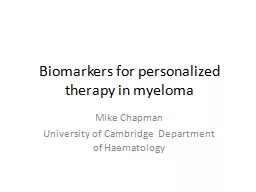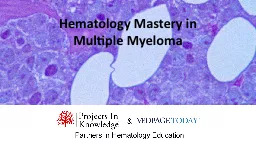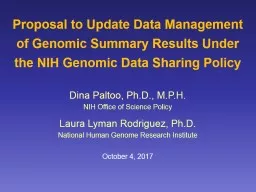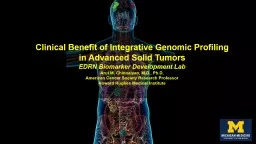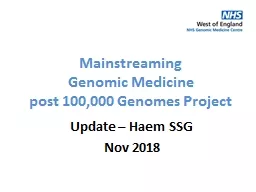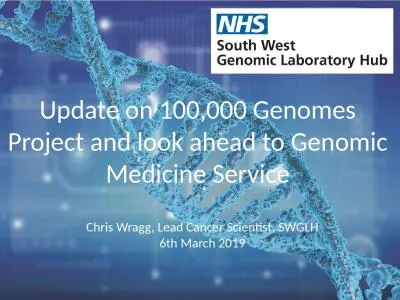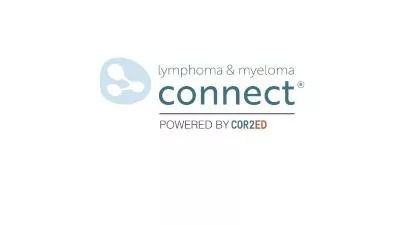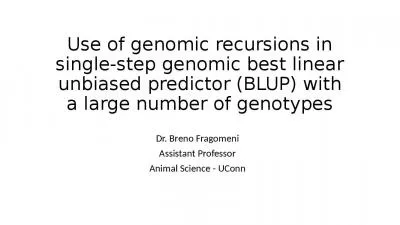PPT-Genomic Sequencing in Myeloma:
Author : lindy-dunigan | Published Date : 2016-07-01
Ready for Prime Time DANAFARBER CANCER INSTITUTE Nikhil C Munshi MD Professor of Medicine Harvard Medical School Boston VA Healthcare System Director Basic and
Presentation Embed Code
Download Presentation
Download Presentation The PPT/PDF document "Genomic Sequencing in Myeloma:" is the property of its rightful owner. Permission is granted to download and print the materials on this website for personal, non-commercial use only, and to display it on your personal computer provided you do not modify the materials and that you retain all copyright notices contained in the materials. By downloading content from our website, you accept the terms of this agreement.
Genomic Sequencing in Myeloma:: Transcript
Download Rules Of Document
"Genomic Sequencing in Myeloma:"The content belongs to its owner. You may download and print it for personal use, without modification, and keep all copyright notices. By downloading, you agree to these terms.
Related Documents

